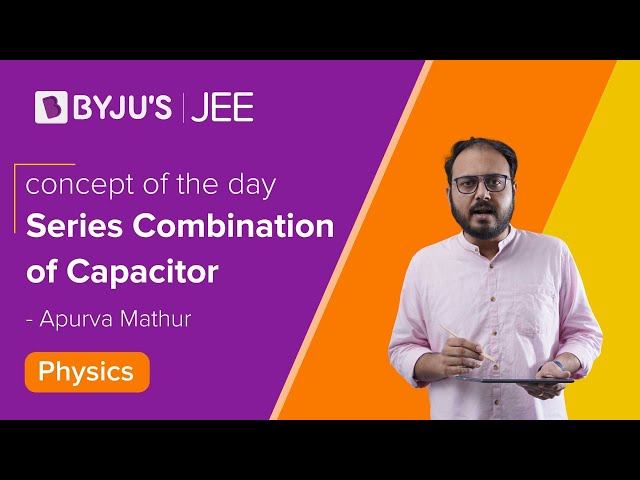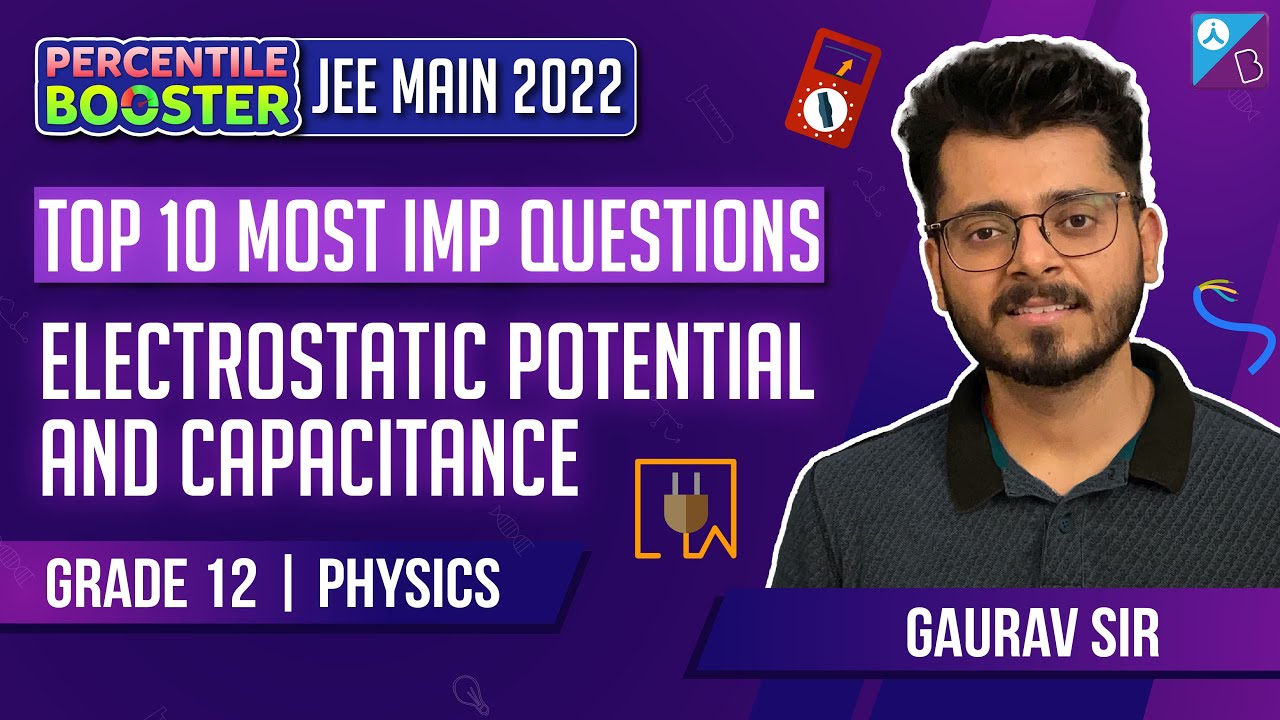How Are Capacitors Connected?
Capacitors combination can be made in many ways. The combination is connected to a battery to apply a potential difference (V) and charge the plates (Q). We can define the equivalent capacitance of the combination between two points to be
Two frequently used methods of combination are: Parallel combination and series combination
Download Complete Chapter Notes of Electrostatic Potential and Capacitance
Download Now
Related Topics
Parallel Combination of Capacitors
When capacitors are connected in parallel, the potential difference V across each is the same and the charge on C1 and C2 is different, i.e., Q1 and Q2.

The total charge in Q is given as:
The equivalent capacitance between a and b is:
C = C1 + C2
The charges on capacitors are given as:
- \(\begin{array}{l}Q1=\frac{{{C}_{1}}}{{{C}_{1}}+{{C}_{2}}}Q\end{array} \)
- \(\begin{array}{l}Q2=\frac{{{C}_{2}}}{{{C}_{1}}+{{C}_{2}}}Q\end{array} \)
In case of more than two capacitors, C = C1 + C2 + C3 + C4 + C5 + …………
Series Combination of Capacitors
When capacitors are connected in series, the magnitude of charge Q on each capacitor is the same. The potential difference across C1 and C2 is different, i.e., V1 and V2.

Q = C1 V1 = C2 V2
The total potential difference across combination is:
V = V1 + V2
The ratio Q/V is called the equivalent capacitance C between points a and b.
The equivalent capacitance C is given by:
The potential difference across C1 and C2 is V1 and V2 respectively, is given as follows:
In the case of more than two capacitors, the relation is:
Important Points:
- If N identical capacitors of capacitance C are connected in series, then effective capacitance = C/N
- If N identical capacitors of capacitance C are connected in parallel, then effective capacitance = CN
Watch These Videos for Reference
Parallel Combination of Capacitor

Capacitors in Series

Problems on Combination of Capacitors
Problem 1: Two capacitors of capacitance C1 = 6 μ F and C2 = 3 μ F are connected in series across a cell of emf 18 V. Calculate:
(a) The equivalent capacitance
(b) The potential difference across each capacitor
(c) The charge on each capacitor
Sol:
(a)
(b)
Q = CeqV
Substituting the values, we get
Q = 2 μF × 18 V = 36 μ C
V1 = Q/C1 = 36 μ C/ 6 μ F = 6 V
V2 = Q/C2 = 36 μ C/ 3 μ F = 12 V
(c) When capacitors are connected in series, the magnitude of charge Q on each capacitor is the same. The charge on each capacitor will equal the charge supplied by the battery. Thus, each capacitor will have a charge of 36 μC.
Example 2: Find the equivalent capacitance between points A and B. The capacitance of each capacitor is 2 μF.

Sol: In the system given, 1 and 3 are in parallel. 5 is connected between A and B. So, they can also be represented as follows:
- As 1 and 3 are in parallel, their effective capacitance is 4μF
- 4μF and 2μF are in series, so their effective capacitance is 4/3μF
- 4/3μF and 2 μF are in parallel, so their effective capacitance is 10/3μF
- 10/3μF and 2μF are in series, so their effective capacitance is 5/4μF
- 5/4μF and 2μF are in parallel, so their effective capacitance is 13/4μF
Therefore, the equivalent capacitance of the given system is 13/4μF.

Introduction to Capacitors and Combination of Capacitors

Capacitors – Video Lesson

Top 10 Important Questions on Electrostatic Potential and Capacitance


Comments